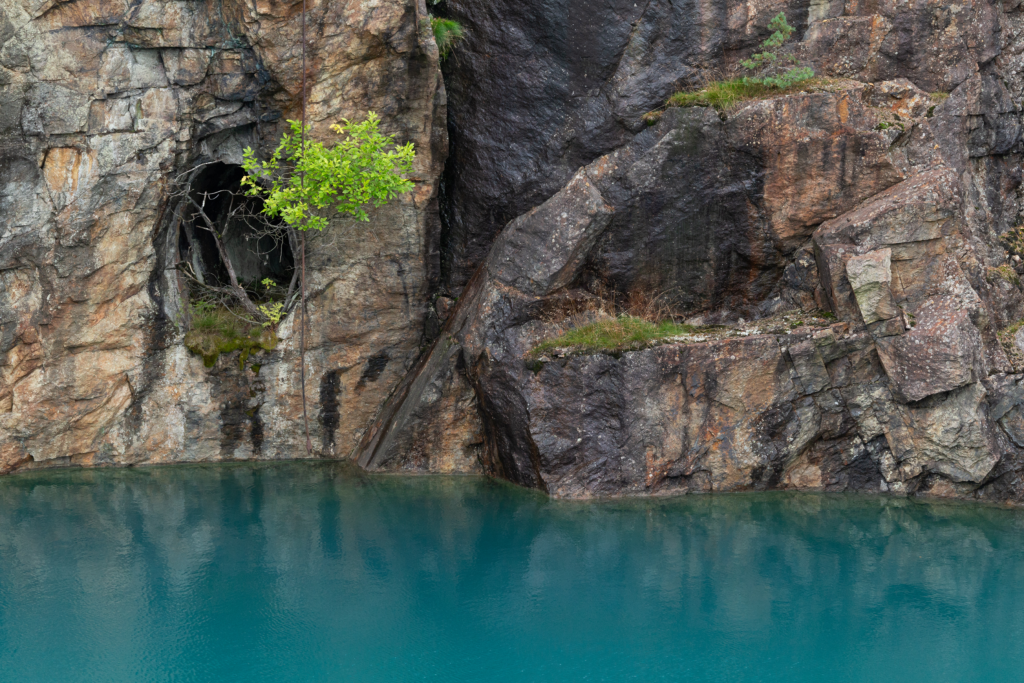Old Mining Waste Areas Present a Persistent Environmental Hazard. How Can Research Help to Remediate Them and Assess Their Risks?
Many old mining waste areas in Finland were closed or abandoned in ways that pose a significant and persistent environmental hazard to their surroundings. Bodies of water and sensitive natural areas near these sites are in particular danger due to the burden caused by harmful substances. Methods for the remediation and risk management of old mining waste have been developed for a decade now, and their effectiveness is currently being assessed in site-specific studies.

The trend in the mining industry is towards a more environmentally conscious and responsible way of operating, which also drives the development of mining waste management methods and a shift in focus towards the mitigation of the environmental impact of mining, obtaining a social operating licence and improving safety. In the past, mines in Finland were often abandoned or closed with methods that do not comply with current environmental and safety requirements.
Research into old mining waste areas was also stimulated by the EU Mining Waste Directive that required Member States to survey all closed and abandoned mining waste areas by May 2012. At the European level, the need was accelerated by mining waste accidents in Romania and Spain, where old tailings dams collapsed and caused widespread environmental destruction. In Finland, a similar accident took place in the operating Talvivaara mine in 2012.
The criteria in this EU-wide survey was to list especially those sites which pose a severe negative impact on the environment or which potentially pose a serious medium- or long-term hazard to human health or the environment. This has also been the starting point in the KAJAK projects financed by the Ministry of the Environment that have studied the condition of mining waste areas in Finland for the last ten years. In the first KAJAK project, the environmental authorities produced a continuously updated list of mining waste sites in Finland. Further KAJAK projects investigated the sites in more detail and created a guide for authorities and other operators on the risk assessment of old and abandoned mining waste areas.
Old Mining Waste Areas Threaten Bodies of Water in Particular
In addition to tailings ponds, waste rock areas can pollute the downstream waters for decades or even centuries after mining operations have ceased. This burden on bodies of water and its impact on flora and fauna is one of the biggest environmental problems caused by mining and mining waste areas. The burden results from the weathering of mining waste due to atmospheric oxygen and rain. When this process occurs, together with bacterial activity that promotes the oxidation of minerals, acid drainage, harmful substances containing run-off and seepage can occur.
The most problematic are metal ore mines that contain a high concentration of sulfate minerals. In addition to surface waters, ground water might also become contaminated. Old mining waste areas cause chemical and physical changes in waters, but they can also burden the environment by releasing airborne dust, pose a hazard of collapse or impact the landscape negatively.
Things to Consider in Risk Management and Remediation
The risk management process should identify, describe and define the risks and current environmental impacts of a mining environment and model the short-term and long-term trends in the impacts. Each area has a unique set of geological and other environmental characteristics, such as the proximity to bodies of water and sensitive natural areas. Therefore, a conceptual model must be created of each region that considers the emission sources (mining waste areas), emission pathways (ditches, streams, bedrock fracture zones, strength of winds, etc.) and the affected parties (people, flora, fauna).
The remediation efforts should be based on best environmental practices (BEP) and best available technology (BAT) and run a cost-benefit calculation to determine the financial viability of the remediation. It is essential to determine the desired concentration of harmful substances first and then determine the best methods for reaching this level while keeping an eye on the environmental and financial criteria. The remediation method plans should take into account that the potential after-care and monitoring of the remediation results also incur costs.
The Need for Remediation Is Determined by Site Surveys
In addition to surveying old and closed mines, assessing the necessary measures and producing a guidebook, the Geological Survey of Finland (GTK) has carried out a case study in the Orijärvi mining area. For example, GTK has collected several water samples in the area to determine the chemical quality of the water and measure the physical parameters and flows of the water. The results have enabled the assessment of the burden and environmental impact on the studied body of water. The water samples were collected from several streams in the area, and also from lakes and the open-pit mine itself.
